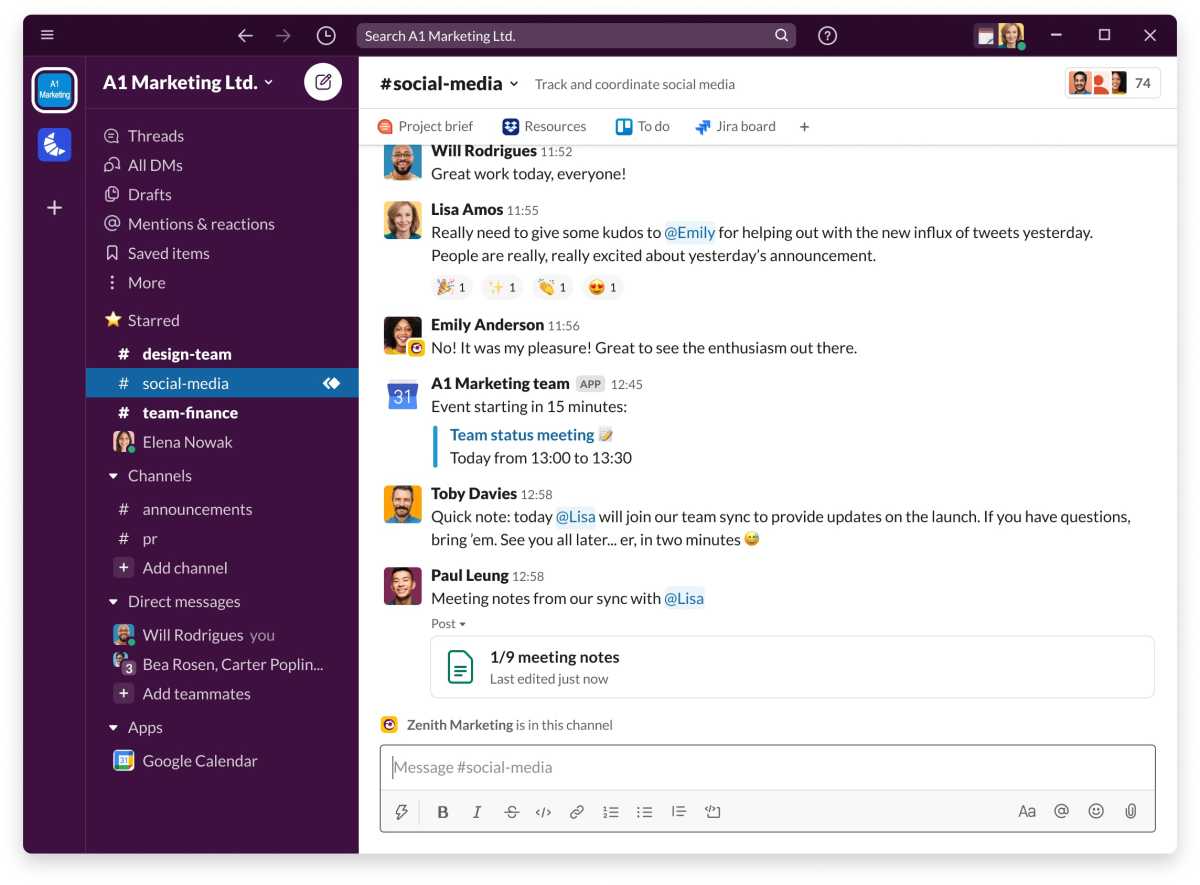A couple of years ago, my oldest group of friends broke a 15-year streak of communicating via email. It’s not that we’ve stopped staying in touch. Instead, we decided to modernize and migrate conversations to Slack, a group chat service whose longstanding mission is to cut down on email messages. Since since making the switch, we’ve been chatting more regularly while having more fun doing it.
This was an unusual move. Slack is supposed to be a tool for team communications within a business enterprise, not personal conversation. The Slack business model revolves around giving away the core product, then upselling enterprise-grade features, such as granular message-archiving controls and unlimited business app integration.
Yet a lot of the features that make Slack alluring for businesses also make the service enjoyable for personal groups:
- Each group’s “workspace” can have multiple chat rooms, so you can spare the full group from conversations on narrower interests. In my personal workspaces, for example, we have separate rooms for sports, tech, music, and Wordle scores.
- You can easily alert a particular person by @ mentioning them or sending them a private message.
- You can break off discussions into separate threads to avoid cluttering up the main chat.
- All the photos and files people share are viewable in one place, and you can bookmark important messages.
- It works pretty much the same way across iOS, Android, Windows, Mac, and the web. Unlike when Android users crash an iMessage party, there’s no drama when different device types mix.
- There are some fun apps you can use inside Slack, such as Spoiler for discussing TV plot points, Giphy for attaching animated GIFs, and Simple Poll for voting on contentious topics. You can even add a Zoom integration to start video calls directly from Slack.
- The free version should cover the vast majority of personal use cases, and there are no ads or sales of personal data to worry about.
While I’m hardly the first person to discover Slack’s potential for personal use, the desire for more digital communication during the pandemic finally made it click for me. Whether it’ll work for you will likely come down to how you communicate with your friends and family.
Where Slack works best

Slack
I should note up front that I’m already using Slack for work. Both Foundry (the publisher of TechHive and PCWorld) and another freelance client of mine use Slack for everyday communications, so I regularly bounce between these two workspaces to coordinate assignments with my editors. The notion of looping personal communication into the same app was enticing—especially compared to other chat room services such as Discord—and a few of my friends had the same motivation. You should expect more of an uphill battle if no one you know uses Slack already.
It’s also safe to say that Slack makes more sense for larger groups of people. The more people that join, the greater the odds that your group will converse enough to make the habit stick, and the more you’ll be able to justify having multiple chat rooms and spin-off threads. So, if your circle is small and always stays on topic, communicating in group texts or emails should be fine instead.
In a similar vein, it also helps if you send a lot of messages (or aspire to). Back in the mid- to late-aughts, our friend group would send hundreds of emails per day, and trying to read through them all got pretty gnarly. Like any other chat app, Slack just flows better, and its bookmarking, sorting, and threading features really come in handy when lots of messages are flying around.
So what’s the downside to Slack?
As one friend pointed out, if you are using Slack already, having personal communications in the same place might only encourage checking into work after hours. The little unread message dots that Slack shows over your other workspaces can be hard to resist even when you’re off the clock.
The bigger issue, though, is that you might lose some people in the transition to Slack. Among those of us who’ve enthusiastically embraced Slack, the volume of conversation seems to have increased well beyond our previous email use, but we also have a few folks who don’t participate much, either out of neglect or an inability to use Slack on their work computers. Is an active-yet-fractured chat group better than a less conversive whole? That’s something you’ll have to answer for yourself.
Lastly, I’ll note that Slack probably won’t work with groups that aren’t tech-savvy or willing to experiment. After the rousing success of moving my friend group to Slack, I tried creating a family Slack for my parents, sister, and brother-in-law. None of them even bothered to sign up.
But don’t let a fear of failure discourage you. If you’ve got a group that’s sending too many emails or getting frustrated with conventional chat apps, Slack might be just what it needs to pick up the conversation again.
This story first appeared in Advisorator, Jared’s weekly tech advice newsletter. Sign up to get practical tips in your inbox every week.




